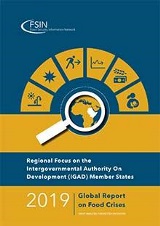Publications

2022 Global Report on Food Crises: Joint analysis for better decisions
04/2022
The 2022 Global Report on Food Crises (GRFC 2022) highlights the alarming deterioration of acute food insecurity in 2021

Drought in the Horn of Africa: Rapid response and mitigation plan to avert a humanitarian catastrophe
01/2022
January–June 2022 The Horn of Africa is facing the third severe La Niña‑induced drought episode in a decade, and the region is on the verge of a catastrophe if humanitarian assistance is not urgently scaled up.
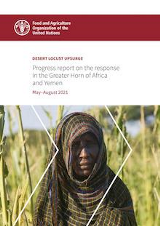
Desert locust: Progress report on the response in the Greater Horn of Africa and Yemen (May–August 2021)
10/2021
The fight against desert locust continues in the Greater Horn of Africa and Yemen, now raging for 20 months – since January 2020. Collective efforts from governments, FAO and partners are proving extremely effective in controlling this upsurge, which is the worst to hit the region in 70 years.

Greater Horn of Africa and Yemen: Desert locust crisis appeal, January 2020–December 2021
07/2021
The worst desert locust outbreak in decades is underway in the Greater Horn of Africa and Yemen, where tens of thousands of hectares of cropland and pasture have been damaged in Djibouti, Eritrea, Ethiopia, Kenya, Somalia, South Sudan, the Sudan, Uganda, the United Republic of Tanzania and Yemen, with potentially severe consequences for agriculture-based livelihoods in contexts where food security is already fragile.
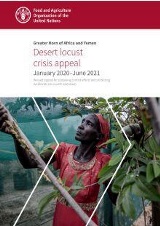
Greater Horn of Africa and Yemen: Desert locust crisis appeal January 2020 – June 2021
12/2020
The document is the revised version of the previously published Desert locust crisis appeal, providing an update and expansion of FAO's funding requirements for rapid response and sustained actions in the Greater Horn of Africa and Yemen to address the ongoing crisis.
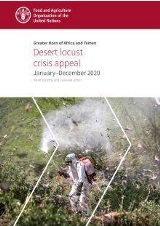
Greater Horn of Africa and Yemen: Desert locust crisis appeal (January–December 2020)
05/2020
The worst desert locust outbreak in decades is underway in the Greater Horn of Africa and Yemen, where tens of thousands of hectares of cropland and pasture have been damaged in Djibouti, Eritrea, Ethiopia, Kenya, Somalia, South Sudan, the Sudan, Uganda, the United Republic of Tanzania and Yemen, with potentially severe consequences for agriculture-based livelihoods in contexts where food security is already fragile.

FAO's role in humanitarian contexts: Saving lives through stronger, more resilient livelihoods - Revised version
04/2020
The number of people experiencing hunger – both chronic and acute – has been persistently high in recent years.
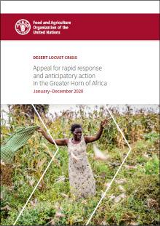
Desert Locust crisis: Appeal for rapid response and anticipatory action in the Greater Horn of Africa January–December 2020
02/2020
The worst desert locust outbreak in decades is underway in the Greater Horn of Africa, where tens of thousands of hectares of cropland and pasture have been damaged in Djibouti, Eritrea, Ethiopia, Kenya, Somalia, South Sudan, Uganda and the United Republic of Tanzania, with potentially severe consequences for agriculture-based livelihoods in contexts where food security is already fragile.
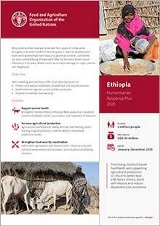
Ethiopia: Humanitarian Response Plan 2020
02/2020
More than 80 percent of people in Ethiopia rely on agriculture and livestock for their livelihoods. Yet increasing climate disasters, poor rainfall and plant pest outbreaks have left rural communities highly vulnerable to food insecurity.

Resilience analysis of pastoral and agropastoral communities in South Sudan’s cross-border areas with Sudan, Ethiopia, Kenya and Uganda
09/2019
The IGAD member states are situated in a region exposed to recurrent natural shocks, political instability and characterized by internal and cross-border population displacement.
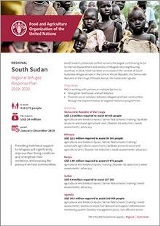
South Sudan Regional Refugee Response Plan 2019–2020
02/2019
South Sudan’s protracted conflict remains the largest contributing factor to internal displacement and exodus of refugees into neighboring countries.



